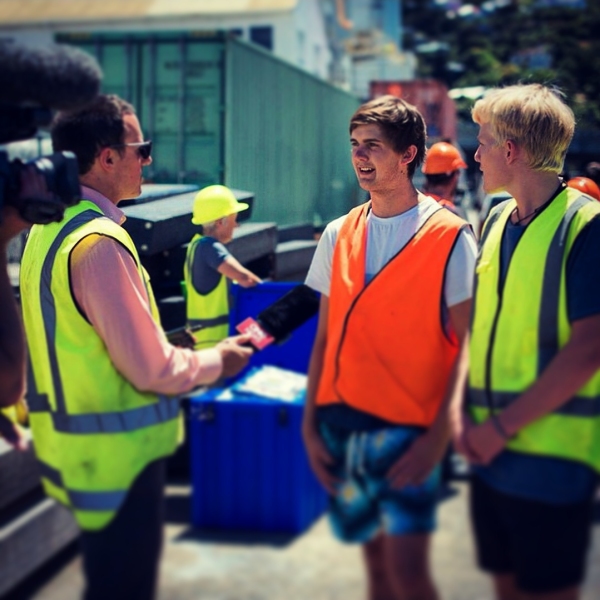Being selected as one of the two 2014 Blake NIWA Science ambassadors is the most incredible opportunity ever. I still remember the phone call at uni late into second semester last year. Just an average day, then a phone call from the trust that has changed my whole summer and will be one of my greatest adventures.
Hannah from the Sir Peter Blake Trust told me that I had been selected and was going to Antarctica in January. I couldn’t believe it, I just stood there with the phone to my ear and was completely speechless. I was overwhelmed by the most incredible feeling. I was going to fulfil one of my oldest life dreams at the young age of 19, and not only would I just be going to Antarctica, I am getting to go with NIWA and some of the world’s leading scientists in their field to study humpback and blue whales and the Antarctic toothfish.
Sir Peter Blake has always been a personal hero, he was an amazing sailor winning the Whitbread round the world race twice, and setting a 74 day world record for sailing non-stop round the world and winning the Jules Verne. He also led the charge for two of Team New Zealand’s successful campaigns in the America’s Cup putting New Zealand on the map as a sailing country. Most of all though, he had an incredible passion for the environment and in his last years before his tragic death he sailed around the world making a difference for issues such as climate change and deforestation in the Amazon. It is so humbling to represent such an incredible man’s legacy.
Now, 5 months after finding out, I’m in Wellington having just completed a STCW95 course and Antarctic training in preparation for setting sail on Thursday the 29th of January. The STCW95 course has covered first aid, firefighting and sea survival - all very important skills and knowledge to have if something does happen to go wrong in the Southern Ocean, which is one of the least hospitable places on the globe. Being thousands of kilometres away from the nearest hospital, ambulance, fire truck and rescue helicopters, it is essential that if worst comes to worst we can survive until help can reach us - which could be a matter of days or weeks.
On the first aid course we learnt how to deal with all sorts of potential medical issues. From heart attacks, strokes, drowning, and many other very undesirable situations. It’s now safe to say I can perform CPR and use most basic first aid equipment. During the fire extinguisher course we got to let off some smoke flares and put out some relatively small fires with a range of different types of extinguishers. The last part of the course, and the part I found most fun, had us in the swimming pool, donning survival life jackets and full immersion suits. Jumping off the diving boards into the pool with the gear on. Then inflating a 20 man rescue life raft, flipping it up the right way and getting everyone in as fast as we could.
After all of the training I feel really prepared to head down to the Southern Ocean. I am filled head to toe with excitement and can’t wait for the adventure to begin!
Zac


